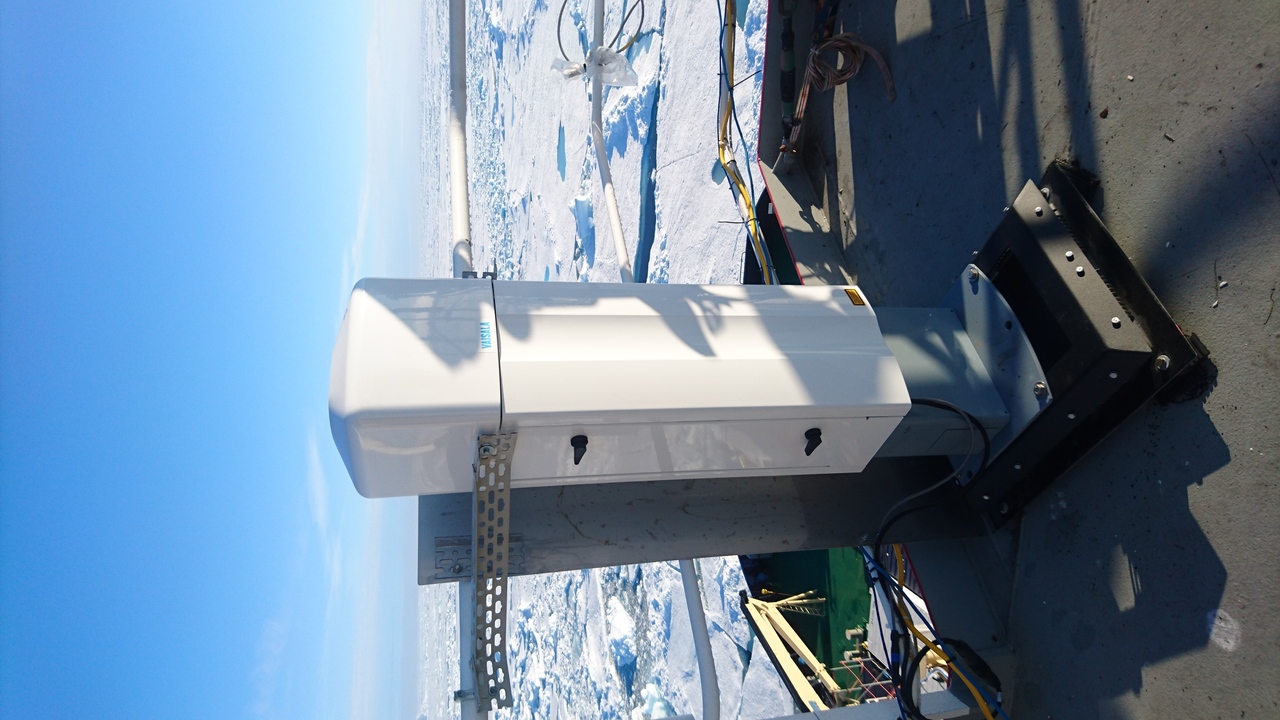John Prytherch, Michael Tjernström
Measurements of cloud base height, cloud fraction and backscatter profiles.
The dataset provides rare high quality meteorological observations from sea-ice regions of the Arctic Ocean. They enable analysis of meteorological conditions and provide context for other measurements and analysis associated with the expedition.
The measurements are from the CL31 ceilometer operating on Icebreaker Oden’s 7th deck at 25 m above sea level during the Arctic Ocean 2018 (AO2018, also referred to as MOCCHA-ACAS-ICE) expedition to the central Arctic Ocean in August and September 2018.
Download data
Citation
John Prytherch, Michael Tjernström (2020) Ceilometer backscatter, cloud base height and cloud fraction data from the Arctic Ocean 2018 expedition. Dataset version 2. Bolin Centre Database. https://doi.org/10.17043/oden-ao-2018-ceilometer-2
Data description
Data from the MISU Vaisala CL31 ceilometer, averaged over either 1 or 30-minute intervals. Two data formats are available: Matlab (.mat) and NetCDF (.nc), with an accompanying readme (.rtf) file.
Comments
The height to the lowest cloud base, and up to two additional cloud bases when the lowest cloud layer does not cover the whole sky, was measured by a Vaisala CL31 ceilometer, located above Oden’s bridge on the 7th deck. The ceilometer was part of the Stockholm University ACAS project.
The system uses a proprietary Sky Condition algorithm to determine cloud fraction at up to five levels, converting single-point time-series measurements to time-averaged area coverage. The system additionally recorded the backscatter profile, and hence serves as a so-called poor-man’s LiDAR. When the attenuation of the laser beam reaches a threshold, like in a dense fog, it switches to reporting vertical visibility, rather than cloud-base height.
Data from the ceilometer are combined into a cruise-length file. The data are time-averaged to both 1-minute and 30-minute intervals, to correspond with the micrometeorological averaging periods used for the mast sensors.
Coordinates (lat, lon) for the observations are not included in this dataset, but they are the same as in the Weather data from MISU weather station during the Arctic Ocean 2018 expedition.
Version history
Version 2
Essentially the same data as in version 1, but with an updated readme file and new metadata within the nc files.
Version 1
Initial release.
